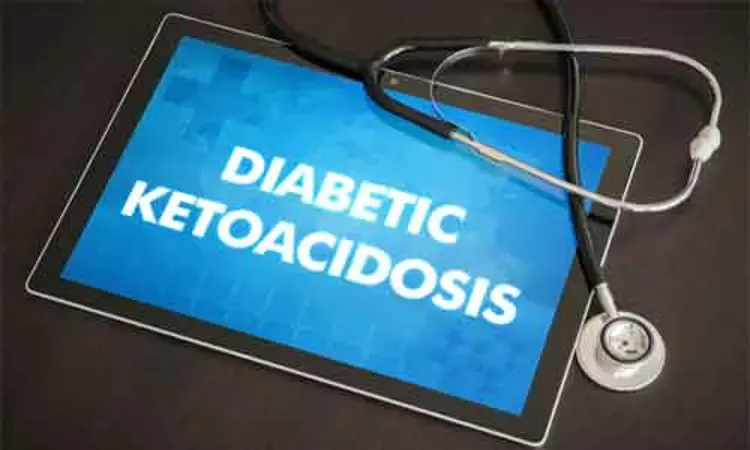- Home
- Medical news & Guidelines
- Anesthesiology
- Cardiology and CTVS
- Critical Care
- Dentistry
- Dermatology
- Diabetes and Endocrinology
- ENT
- Gastroenterology
- Medicine
- Nephrology
- Neurology
- Obstretics-Gynaecology
- Oncology
- Ophthalmology
- Orthopaedics
- Pediatrics-Neonatology
- Psychiatry
- Pulmonology
- Radiology
- Surgery
- Urology
- Laboratory Medicine
- Diet
- Nursing
- Paramedical
- Physiotherapy
- Health news
- Fact Check
- Bone Health Fact Check
- Brain Health Fact Check
- Cancer Related Fact Check
- Child Care Fact Check
- Dental and oral health fact check
- Diabetes and metabolic health fact check
- Diet and Nutrition Fact Check
- Eye and ENT Care Fact Check
- Fitness fact check
- Gut health fact check
- Heart health fact check
- Kidney health fact check
- Medical education fact check
- Men's health fact check
- Respiratory fact check
- Skin and hair care fact check
- Vaccine and Immunization fact check
- Women's health fact check
- AYUSH
- State News
- Andaman and Nicobar Islands
- Andhra Pradesh
- Arunachal Pradesh
- Assam
- Bihar
- Chandigarh
- Chattisgarh
- Dadra and Nagar Haveli
- Daman and Diu
- Delhi
- Goa
- Gujarat
- Haryana
- Himachal Pradesh
- Jammu & Kashmir
- Jharkhand
- Karnataka
- Kerala
- Ladakh
- Lakshadweep
- Madhya Pradesh
- Maharashtra
- Manipur
- Meghalaya
- Mizoram
- Nagaland
- Odisha
- Puducherry
- Punjab
- Rajasthan
- Sikkim
- Tamil Nadu
- Telangana
- Tripura
- Uttar Pradesh
- Uttrakhand
- West Bengal
- Medical Education
- Industry
Diabetic ketoacidosis prevalence quadrupled during the COVID-19 pandemic, study finds

USA: A recent study reported that in hospitalized patients, the prevalence of diabetic ketoacidosis (DKA) quadrupled during the pandemic period versus the pre-pandemic period. Also, mortality of DKA almost doubled in COVID-19 patients and COVID-19 was associated with higher rates of renal failure in DKA patients.
The researchers suggest DKA screening all COVID-19+ patients and prioritizing ICU DKA/COVID-19+ with low blood pressures, oxygen saturation, or renal insufficiency. The study appears in the journal Diabetes & Metabolic Syndrome: Clinical Research & Reviews.
It is known that diabetes mellitus (DM) is not a risk for developing COVID-19 however, diabetics infected with COVID-19 have worse outcomes. Recently, diabetic ketoacidosis (DKA), a potentially lethal complication of diabetes was described in 110 COVID-19 patients with a 45% mortality rate in a systematic review by Pal et al. of 19 case series. However, case series cannot describe an association, much less a cause-and-effect relationship between COVID-19 and DKA.
Against the above background, Faraz Khan, Kings County Hospital – New York City Health and Hospitals, Department of Emergency Medicine, USA, and colleagues aimed to describe the prevalence/outcomes of diabetic ketoacidosis patients comparing pre- (March–April 2019) and pandemic (March–April 2020) periods.
The study included admitted pandemic DKA/COVID-19+ patients comparing prevalence/outcomes to pre-pandemic DKA patients that takes place in Eleven hospitals of New York City Health & Hospitals. The included participants during the pandemic period were admitted COVID-19+ patients (>18 years) and were admissions (>18 years) selected through the medical record during the pre-pandemic period.
COVID-19+ by PCR testing was the intervention. Mortality during the index hospitalization was the main outcome. Secondary outcomes were demographics, medical histories and triage vital signs, and laboratory tests.
DKA was defined as beta-hydroxybutyrate (BHBA) (>0.4 mmol/L) and bicarbonate (<15 mmol/L) or pH (<7.3).
Following were the study's salient findings:
- Demographics and past medical histories were similar during the pre-pandemic (n = 6938) vs. pandemic (n = 7962) periods.
- DKA prevalence was greater during the pandemic (3.14%) vs. the pre-pandemic period (0.72%).
- DKA/COVID-19+ mortality rates were greater (46.3% vs. pre-pandemic period (18%)).
- Surviving vs. non-surviving DKA/COVID-19+ patients had more severe DKA with lower bicarbonates by 2.7 mmol/L and higher both Anion Gaps by 3.0 mmol/L and BHBA by 2.1 mmol/L.
To conclude, the study showed that is not necessary that the patients with worse DKA that died but patients with worse COVID-19. This was seen as higher SOFA scores, respiratory rates, and worst renal failure were associated with higher mortality rates.
"This data helps characterize the prevalence and mortality associated with DKA and COVID-19 and helps guide future management strategies in these patients," the authors concluded.
Reference:
Faraz Khan, Lorenzo Paladino, Richard Sinert, The impact of COVID-19 on Diabetic Ketoacidosis patients, Diabetes & Metabolic Syndrome: Clinical Research & Reviews, Volume 16, Issue 1, 2022, 102389, ISSN 1871-4021, https://doi.org/10.1016/j.dsx.2022.102389.
Dr Kamal Kant Kohli-MBBS, DTCD- a chest specialist with more than 30 years of practice and a flair for writing clinical articles, Dr Kamal Kant Kohli joined Medical Dialogues as a Chief Editor of Medical News. Besides writing articles, as an editor, he proofreads and verifies all the medical content published on Medical Dialogues including those coming from journals, studies,medical conferences,guidelines etc. Email: drkohli@medicaldialogues.in. Contact no. 011-43720751


